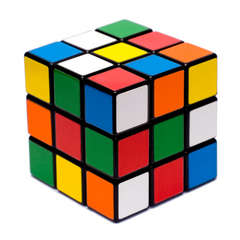 I’m taking a break from the first draft of UTOPIA to do a third draft of MAGIC AT 30,000 FEET. Why? Good initial feedback from my agents, and I’d had to step away from UTOPIA for a bit anyway when I did the quick copyedit of THE MEMORY THIEF.
I’m taking a break from the first draft of UTOPIA to do a third draft of MAGIC AT 30,000 FEET. Why? Good initial feedback from my agents, and I’d had to step away from UTOPIA for a bit anyway when I did the quick copyedit of THE MEMORY THIEF.
It’s interesting to me how different revision feels from writing new material. With new material, the thing that drives me is the exploration: discovering what’s going to happen next. I’ve tried plotting before, right down to having every little detail mapped out before I write the book. It made the drafting process easier, but I didn’t enjoy it as much. These days, I plot out the book in very broad strokes. The best way to describe it would be to liken it to a cross country trip, where I know which big cities I’m going to visit on the way, but that’s about it. The adventure is in getting to those cities and finding out what they’re actually like in person.
Revision, on the other hand, feels much more like a puzzle to me. When I approach a revision, I’ll read through the old draft and make notes about big things that need fixing. I’ll also check to see what alpha or beta readers have had to say (including my agents, naturally). Then I’ll come up with a list of changes that need to happen in the book. At that point, I delve into the book and start tweaking things to get everything off that list.
Sometimes it’s easy. Go through and eliminate a character or a few scenes that are just extraneous. But other times, it’s tricky. If the character you’re eliminating played a major role in some scenes, then you need to retool those scenes so they work without that character. That, in turn, sometimes necessitates more revisions to make the retooled scenes fit in with the whole of the novel.
It can be very non-linear, with me spending time on one spot, then flitting over to another to work on it, before having to go back to the original spot.
The other trick is that it’s an entirely different skill set than original writing. What I mean is that when I’m writing original material, I decide if it’s good or bad by how engaged I am in the plot. If the momentum feels good. If the characters feel right. There’s just a sense to it when it’s working, and when it isn’t.
None of that applies in a revision, particularly a revision of a book I’ve worked on a fair bit. It becomes harder and harder to trust my gut, because I can’t get a read on how the book is doing as a whole. I’m just focused on these small goals in the bigger revision checklist. I have to keep my head down and just barrel through those one by one, trusting that fixing those will in turn help the book as a whole.
With original writing, it’s a forest. With revision, it’s the trees.
Anyway. This is just a long way of saying “I’m revising again.” Not sure how long this one will take me. At first I didn’t think it would be too bad, but it’s proved to be thornier than I anticipated. (Once you get into a book and start pulling things apart, you can discover other problems that were hiding at first. Sort of like car repair. Have I used enough analogies yet?)
The good news is that the book is still one I really enjoy, and the changes I’m making make me even happier with it. Always a plus.
Wish me luck!

Related Posts
How Much Description Do You Like in a Novel?
As an author, I can’t help comparing my style with the style of the books I read as I read them. Yes, there are times when I get frustrated with a book because I feel like it could have written it better (being completely honest here), but there are times…
Read More »
Writing from Different Perspectives
A personal pet peeve of mine is when someone critiques a book by saying the author had no right to write from a certain point of view. Specifically, it’s the “men shouldn’t write about women” mantra that rubs me the wrong way, though I also feel the same way about…
Read More »